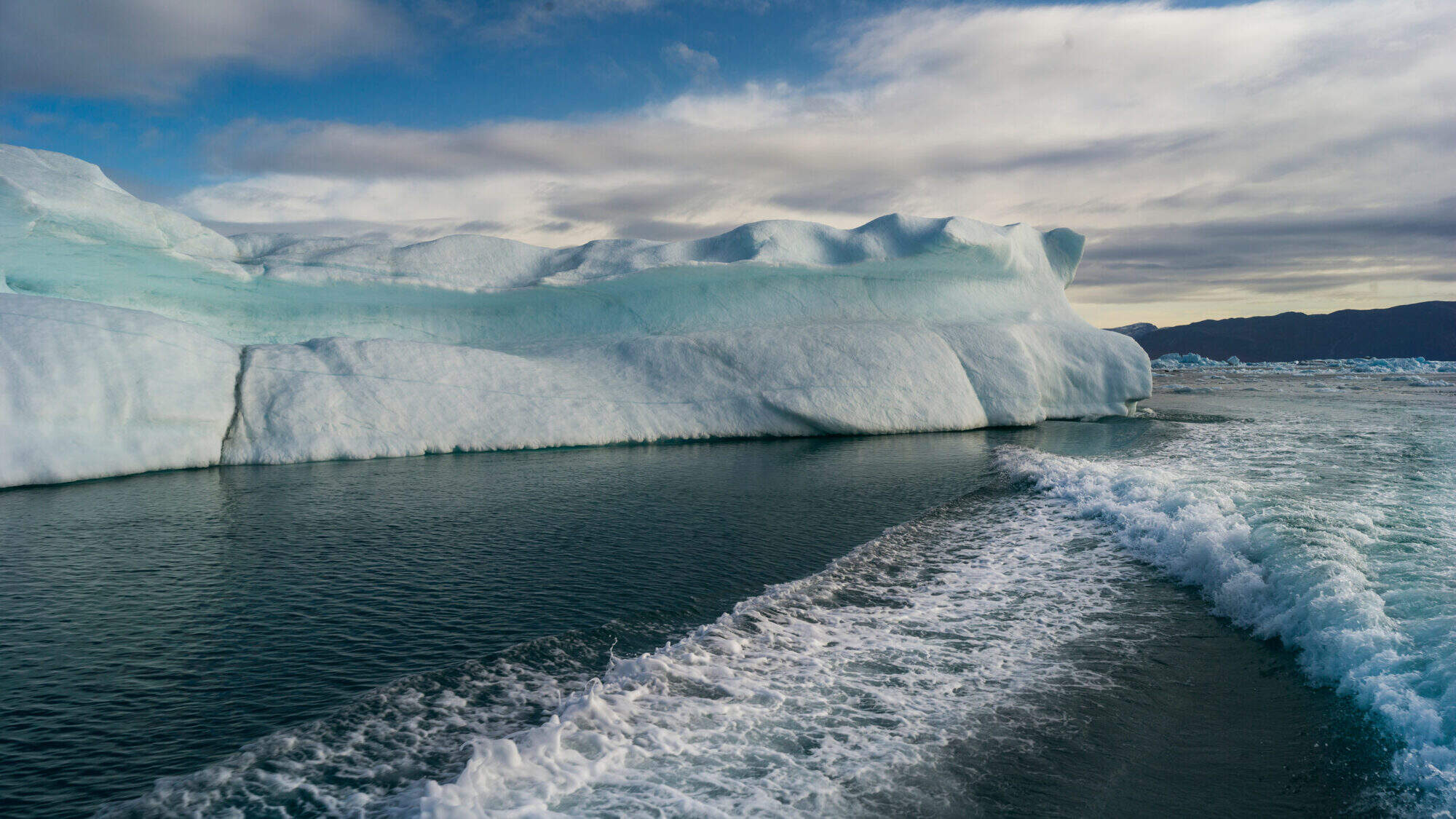
The Labrador Sea is a fascinating body of water located in the North Atlantic Ocean, bordered by the coast of Labrador to the west and the eastern coast of Greenland to the east. It is known for its extreme conditions, unique marine ecosystems, and remarkable geological features. In this article, we will delve into 16 unbelievable facts about the Labrador Sea that will amaze and awe you. From its deep-sea trenches to its diverse marine life, this vast expanse of water holds secrets that continue to intrigue scientists and nature enthusiasts alike. So, get ready to dive into the depths of the Labrador Sea and explore the wonders that make it one of the most remarkable places on our planet.
Key Takeaways:
- The Labrador Sea is a mesmerizing world of underwater wonders, from the largest underwater waterfall to ancient coral reefs, offering a captivating glimpse into Earth’s remarkable history and biodiversity.
- With its extreme weather, diverse marine life, and cultural significance, the Labrador Sea is a living testament to the awe-inspiring power of nature, captivating the imagination and leaving us in awe of our planet’s incredible wonders.
The Labrador Sea is home to the world’s largest underwater waterfall.
Yes, you read that right! Deep within the Labrador Sea, there exists an awe-inspiring natural phenomenon known as the “Labrador Sea Waterfall.” This underwater cascade is formed by the abrupt plunge of dense, cold water towards the depths, creating a majestic spectacle that is nothing short of extraordinary. The force and scale of this underwater waterfall are truly breathtaking.
The Labrador Sea boasts an abundance of marine biodiversity.
Dive into the waters of the Labrador Sea, and you’ll be greeted by a vibrant array of marine life. From magnificent whales, such as the humpback and finback, to playful seals and adorable puffins, the Labrador Sea teems with a rich diversity of species. Its cold, nutrient-rich waters provide a flourishing ecosystem that sustains a plethora of fascinating creatures.
Icebergs are a common sight in the Labrador Sea.
One of the most awe-inspiring aspects of the Labrador Sea is the presence of massive icebergs that gracefully drift through its waters. These towering ice mountains, sculpted over thousands of years, create a surreal and breathtakingly beautiful landscape. Spotting these majestic ice formations in the Labrador Sea is an experience that will stay with you forever.
The Labrador Sea is home to the world’s largest hydrographic basin.
Stretching over 3.1 million square kilometers, the Labrador Sea boasts the largest hydrographic basin in the world. This immense basin plays a crucial role in regulating the global climate by influencing oceanic and atmospheric circulation patterns. Its significance cannot be understated, as it has a profound impact on climate systems and weather patterns across the globe.
The Labrador Sea is known for its extreme weather conditions.
The Labrador Sea is notorious for its unpredictable and often harsh weather conditions. Its location in the North Atlantic exposes it to strong winds, powerful storms, and bone-chilling temperatures. These challenging weather conditions make the Labrador Sea a unique and formidable environment, demanding resilience and respect from those who venture into its depths.
The Labrador Sea holds an important place in Inuit culture.
For centuries, the Labrador Sea has been intimately connected to the Inuit people who inhabit its surrounding regions. It holds great cultural and spiritual significance, providing sustenance, transportation, and a sense of identity to the Inuit communities. The Labrador Sea is woven into the fabric of Inuit traditions and serves as a testament to the enduring relationship between humans and nature.
The Labrador Sea is a gateway to the Arctic.
As the Labrador Sea merges with the Greenland Sea, it forms a vital gateway to the Arctic region. The cold, nutrient-rich waters from the Labrador Sea flow northward, impacting the Arctic ecosystem and contributing to its unique biodiversity. This connection highlights the interconnectedness of Earth’s oceans and underscores the crucial role played by the Labrador Sea in shaping the Arctic environment.
The Labrador Sea is home to ancient coral reefs.
Beneath the surface of the Labrador Sea lie remnants of ancient coral reefs that thrived millions of years ago. These remarkable structures provide a window into the past and offer insights into the Earth’s geological history. The discovery of these ancient reefs in the Labrador Sea has provided scientists with a wealth of information to better understand our planet’s ancient ecosystems.
The Labrador Sea is a prime breeding ground for Atlantic cod.
The Labrador Sea plays a crucial role in the life cycle of Atlantic cod, serving as a vital breeding ground for this commercially valuable fish species. The cold, nutrient-rich waters provide ideal conditions for cod reproduction, ensuring the sustainability of this important fishery. The Labrador Sea’s influence on the Atlantic cod population has important implications for both the ecological balance and the livelihoods of many coastal communities.
The Labrador Sea is a treasure trove of shipwrecks.
Beneath the Labrador Sea’s depths lie numerous shipwrecks, testament to the treacherous nature of its waters. These wrecks, some dating back centuries, offer glimpses into maritime history and serve as poignant reminders of the perils faced by seafarers. Exploring the stories behind these sunken vessels is a fascinating dive into the past, revealing tales of triumph, tragedy, and the indomitable human spirit.
The Labrador Sea is home to unique geological formations.
The Labrador Sea is a geological marvel, adorned with captivating formations that have been shaped by millions of years of natural processes. From towering cliffs to breathtaking fjords carved by ancient glaciers, the Labrador Sea’s coastline is a testament to the remarkable power of nature. Exploring these geological wonders offers a glimpse into Earth’s remarkable history and highlights the beauty that exists within our planet.
The Labrador Sea serves as a crucial site for scientific research.
Scientists and researchers flock to the Labrador Sea to study its unique physical and biological characteristics. The diverse range of environmental conditions, from the underwater currents to the presence of icebergs, provides an ideal laboratory for conducting groundbreaking studies. The knowledge gained from these scientific endeavors contributes to our understanding of complex marine ecosystems and helps pave the way for effective conservation efforts.
The Labrador Sea plays a vital role in the global carbon cycle.
The Labrador Sea plays a significant role in absorbing and storing carbon dioxide from the atmosphere, playing a crucial role in regulating Earth’s climate. The cold waters of the Labrador Sea act as a sink for carbon, helping to mitigate the effects of greenhouse gas emissions. Understanding the intricacies of this carbon cycle is essential for addressing climate change and preserving the delicate balance of our planet.
The Labrador Sea is a hotspot for birdwatching.
The Labrador Sea’s coastal regions and islands host a plethora of bird species, making it a paradise for birdwatching enthusiasts. From regal bald eagles to charming Atlantic puffins, the diversity of avian life in the Labrador Sea is truly remarkable. Whether you’re an avid birdwatcher or a casual observer, the Labrador Sea offers countless opportunities to witness the majesty of these fascinating creatures in their natural habitat.
The Labrador Sea provides vital shipping routes.
The Labrador Sea serves as a crucial passage for shipping vessels traversing between North America and Europe. Its strategic location and deep-water ports make it an essential transportation route for goods and commodities. The bustling maritime activities in the Labrador Sea underscore its economic importance and highlight its role in facilitating global trade.
The Labrador Sea is a living testament to the awe-inspiring power of nature.
The Labrador Sea, with its unique characteristics and breathtaking beauty, stands as a living testament to the power and wonder of the natural world. Its captivating geological features, diverse marine life, and cultural significance make it a truly remarkable and awe-inspiring destination. Exploring the mysteries of the Labrador Sea is an adventure that will forever change your perspective on our planet’s incredible wonders.
So, dive into the 16 unbelievable facts about the Labrador Sea and embark on a journey of discovery and amazement. Let the wonders of this magnificent body of water captivate your imagination and leave you in awe of the remarkable world we live in.
Conclusion
In conclusion, the Labrador Sea is a fascinating and mysterious body of water filled with incredible facts. From its unique geographical features to its diverse marine life, there is no shortage of wonders to discover. Whether you’re captivated by its massive icebergs or intrigued by its important role in regulating global climate, the Labrador Sea offers a wealth of knowledge and exploration opportunities. So, dive into its depths and uncover the secrets of this remarkable sea!
FAQs
Q: How deep is the Labrador Sea?
A: The Labrador Sea is known for its deep waters, reaching depths of up to 3,000 meters (9,800 feet) in some areas.
Q: What is the Labrador Current?
A: The Labrador Current is a powerful cold ocean current that flows southward along the eastern coast of Canada, bringing cold water from the Arctic into the Labrador Sea.
Q: What kind of marine life can be found in the Labrador Sea?
A: The Labrador Sea is home to a diverse range of marine species, including Atlantic cod, haddock, capelin, and various species of whales, such as the humpback whale and fin whale.
Q: How important is the Labrador Sea for global climate regulation?
A: The Labrador Sea plays a crucial role in the regulation of global climate. The mixing of warm and cold waters in the Labrador Sea helps drive the Atlantic Meridional Overturning Circulation (AMOC), which influences climate patterns and the distribution of heat around the world.
Q: Are there any myths or legends associated with the Labrador Sea?
A: Yes, there are several myths and legends surrounding the Labrador Sea. One popular legend is that the sea is haunted by a mythical sea creature known as the “Labrador Currasow,” described as a large bird-like creature with the ability to control the weather.
Q: Can you visit the Labrador Sea?
A: While it may not be possible to visit the Labrador Sea itself, there are plenty of opportunities to explore the region surrounding it. Coastal towns and cities in eastern Canada, such as St. John’s and Halifax, provide access to stunning views of the sea and opportunities for whale watching.
Uncover more captivating facts about the wonders of the ocean, from the powerful tides of the North Atlantic to the intricate marine ecosystems that thrive beneath the waves. Dive deeper into the fascinating world of oceanography and learn how these incredible bodies of water shape our planet and the life within them.
Was this page helpful?
Our commitment to delivering trustworthy and engaging content is at the heart of what we do. Each fact on our site is contributed by real users like you, bringing a wealth of diverse insights and information. To ensure the highest standards of accuracy and reliability, our dedicated editors meticulously review each submission. This process guarantees that the facts we share are not only fascinating but also credible. Trust in our commitment to quality and authenticity as you explore and learn with us.


